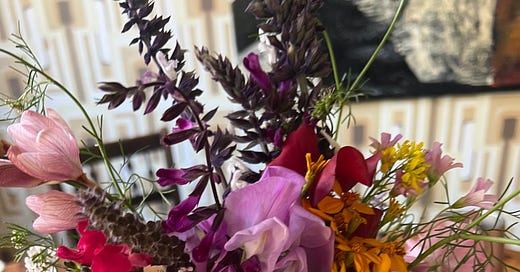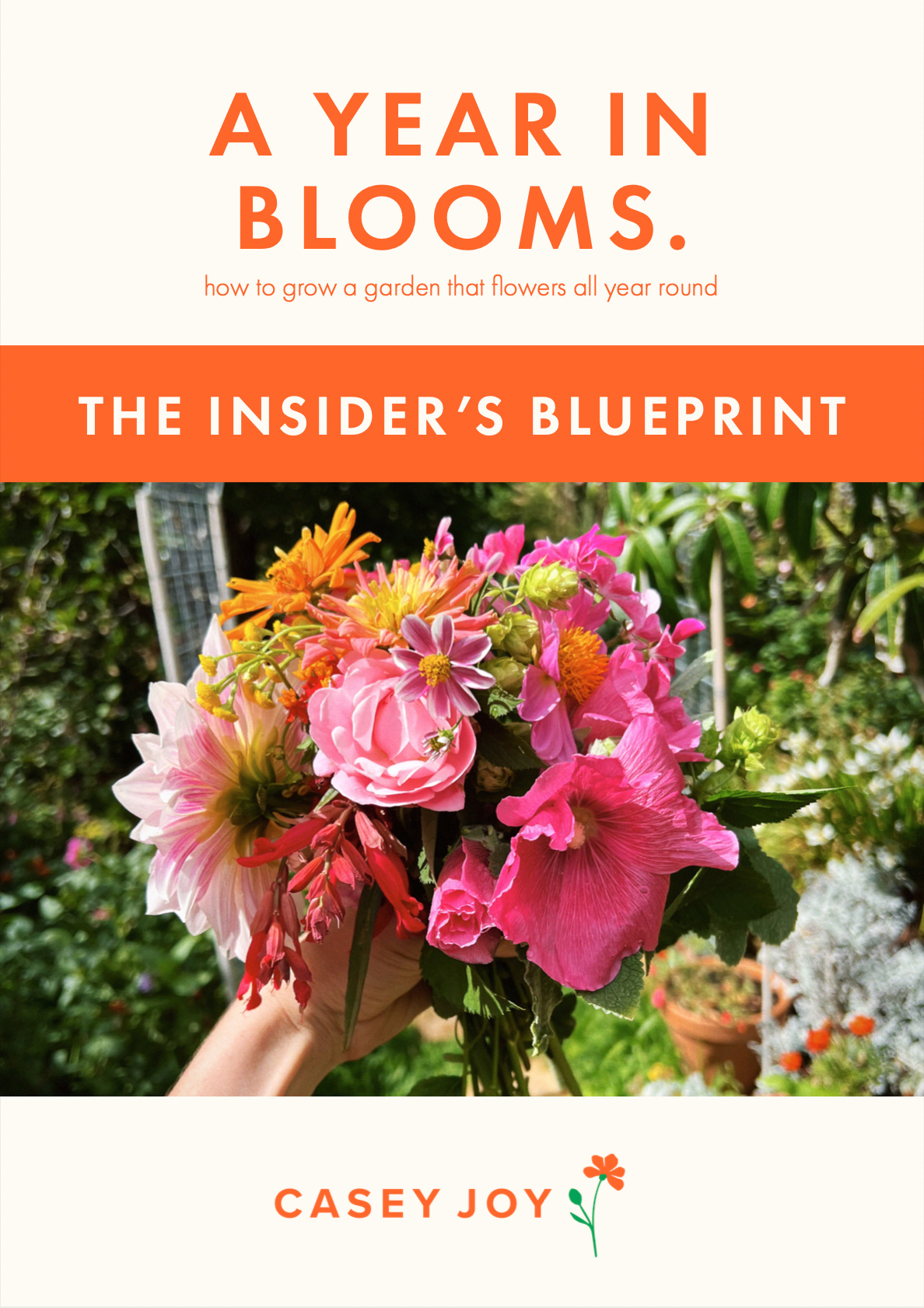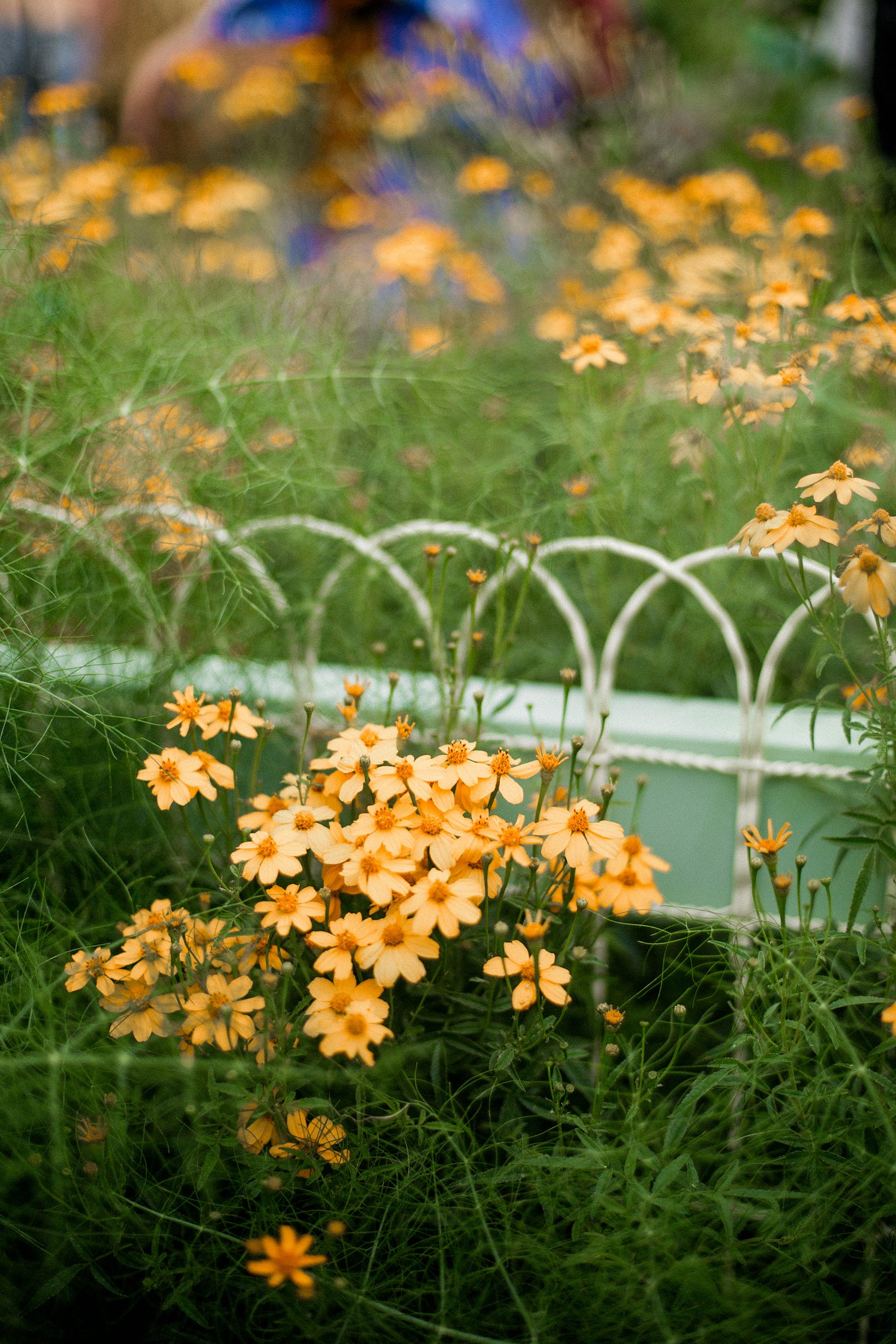Don't let your garden go greyscale this winter
Six tricks to squeeze more colour into your winter garden
I’ve been trying to break up with my iPhone for a while now. Haven’t we all.
I frequently find myself fantasising about buying a ‘dumb phone’, ditching all forms of social media and returning to the life that I lived for most of my childhood and teenage years - one where I’d lose my brick phone under the cushions in our sofa for days on end, where my audio entertainment was Stephen Fry reading Harry Potter on audio cassette and where I filled my days by painting cardboard boxes from Spotlight gold and black for Christmas. Am I idealising the past? Maybe. But there’s no denying that modern technology is captivating in a way that tends to become all-consuming if you don’t constantly, actively guard against it.
On one of my deep dives into methods of iPhone divorce, I stumbled upon an article with a few recommendations for those of us who aren’t ready to give up on iPhones entirely, but still want to make them less compelling. Once piece of advice was to switch the phone screen to greyscale. Turn off the colour, go to an all black-and-white screen and, the writer reasoned, you’ll find yourself less drawn to your phone.
It worked pretty well, until I realised there was a super-fast shortcut to turn greyscale on and off at will. I spent about a week toggling constantly between black and white and full colour, then gave up the exercise entirely. My phone remains as bright and vibrant as ever, and I remain its begrudging, resentful slave.
The only good that came out of this utterly pointless exercise was that it made me realise something I can now apply to my garden - colour really matters.
Over the next few months, Perth gardens will undergo their own seasonal shift back to greyscale. The flowers will finish, clouds will obscure the sun, and, like the predictable creatures we are, we’ll progressively lose interest in going outside.
This is a stupid mistake for two reasons. The first is that we live in PERTH, where our concept of ‘winter’ is a laughable, sun-drenched joke, where we can still grow things like oranges, bananas, papayas and mangoes perfectly easily all year round, and where the mercury rarely drops below 4 degrees C. The second is that we don’t actually have to let our gardens descend into monochromatic morbidity at all (more on this in a tic).
There’s a third reason, now I think about it.
Autumn and winter are the easiest seasons to grow things in Western Australia. We are all suffering some form of mass delusion where we think we should bother growing plants in January (when everything sizzles and dies) and don’t even try to keep gardening through winter (when the rain will water our seedlings, the morning sun will warm them, and our soil won’t instantly degrade into sand). Winter gardening is laughably easy, it will set you up for a beautiful spring, and, if you plant your garden with the right things, it doesn’t have to be grey and gloomy at all. We just need to switch off the greyscale and bring the colour back.
Which brings me to today’s newsletter: five tricks to squeeze more colour into your autumn and winter garden.
Before we get into it, a special announcement: today’s newsletter is inspired by my brand new gardening guidebook, which is available right now (!!) on my website. It is my biggest gardening book to date, and is filled with descriptions of over 100 flowering plants I grow in my own garden, advice on how to grow them, where to plant them, and how to combine them for a garden that looks beautiful all year round.
Every plant featured is also presented on a pinwheel that shows exactly when it flowers, so if you have blank periods in your gardens - months where nothing is flowering - you can see at a glance exactly which plants you should add to bring colour back into your life. My book covers bulbs, structural perennials, climbers and blooming annuals, so whatever your garden might currently be lacking, you’ll be able to find some Perth friendly (and easy to grow!) plants to fill the space.
It’s called A Year in Blooms: The Insider’s Blueprint. And you can grab a copy here.
Ok, now. Let’s get our gardens out of doldrums.
6 tricks to squeeze colour into your winter garden
Plant hot-toned annuals
One of the most depressing things about a winter garden is that it just feels cold out there. Ok, I guess that’s partly because it is literally cold, but that doesn’t mean it has to look cold. The best way I find to make a wintry garden feel warmer and more vibrant is by focusing on the hot-toned flowers you can add.
My two favourites that will thrive through winter are calendula (which you can sow from seed now) and passionfruit marigolds.
Calendula is an easy-to-grow annual that can be sown from seed in Perth pretty much anytime. It has cheerful yellow flowers and the petals are edible (so you can make your winter salads happier too!). The seeds are also easy to collect and save to replant, so you can grow it yourself season after season.
Passionfruit marigolds are SUCH a winner in the Perth garden, and I hardly see them around anywhere. They are perennials, so will last in your garden for many years. They grow into medium-sized shrubs (mine tend to reach about 1-1.2m in height, although I’ve seen some impressive ones growing in Brisbane that hit 2m!), and right about now they begin to burst into bright, warm, orange blooms. I spied the first flowers on mine yesterday, which means that soon the bush will be absolutely covered. The flowers can be cut and brought inside, and the foliage has the most intense flavour of passionfruit/pineapple/lollies - it will knock your socks off.

Plant late-blooming perennials
Two things are true:
It really is harder to find things that flower from about May through to July, but also
Despite this, you definitely can have a garden that has flowers all year round. You just need good tactics and you need to grow the right plants for our climate.
Some of these ‘right plants’ are late-blooming perennials. Yes these may not bloom all through winter, but they play a very important role in bringing colour to your garden through autumn, and can really help carry your garden as things begin to cool down.
Some of my favourite late-blooming perennials to grow in our garden are Canna lilies, Chinese lanterns and salvias - all of which are blooming right now!
Here’s a little information on all three of these fabulous plants, taken directly out of A Year in Blooms.
Canna Lilies
Canna lilies are native to Mexico, Central America, the Caribbean and tropical South America, which makes total sense when you look at them. They are bold, bright and almost jungly. They make me want drink rum and cokes and spin around very fast in a long red dress. They’re not actually a bulb, but a clumping plant that sends new shoots out from underground rhizomes (which are a bit like fleshy roots). They will grow very happily in your garden with minimal fuss. A fantastic one to grow in large pots or towards the back of your flower beds for gorgeous summer and autumn blooms.
Chinese Lanterns
These glorious shrubs flower pretty much all year and are fantastic for adding height and structure to your garden, growing to 2-3m. They come in a variety of warm, bold colours, and their blooms hang like little bells from branches that weep as gently as George Harrison’s guitar.
Salvias
Part of the sage family, salvias are a collection of shrubby plants with fragrant leaves that do very well in a Mediterranean climate and don’t mind our hot, dry summers. There are so many different varieties, all with gorgeous blooms in a range of colours. Pop them in full sun and avoid pruning too heavily initially (I find mine do best with near-total neglect for the first year or so, followed by very light pruning thereafter). If you have killed a salvia or two in your past, don’t let that deter you. This is such a large group of plants and some are much tougher than others, so keep shopping around and trying different varieties until you come across some that work for you. I find varieties like Salvia Hot Lips, Salvia Lime Spires and Salvia Muirii do really well in my garden.
To learn about over 100 other flowering plants I grow in my garden, you can grab a copy of A Year in Blooms here.
Add colour in pots
Such an easy, simple way to add bursts of delicate colour through your winter garden is to dot little pots of pansies and violas around the place. I do this every year, usually planting pansy and viola seedlings on top of my pots of spring bulbs, to add colour and interest while I wait for the bulbs to burst through the soil.
I find these cool-weather flowers do sooo much better in pots as in the ground they tend to either be swamped by other plants, to make the garden look a bit chaotic and ‘bitty’ or to get eaten to shreds by bugs. Putting them into pots gives them more presence in the garden, and it gives you the flexibility to move them to any position that needs livening up. In our garden they work really well perched on top of low walls, framing stairs, and on tables throughout the garden.
Plant perennial grasses
If you have been reading for a while now, you’ve probably heard me ranting about Piet Oudolf already. Piet (pronounced ‘Pete’) is a European gardener designer who favours naturalistic planting schemes and plants gardens that are designed to look beautiful in death, through the depths of winter. And he reaaaally likes his perennial grasses!
His gardens have an ethereal, floaty look to them because, interspersed with all the other things he grows, is a constant undercurrent on shimmery perennial grasses.

Until very recently (like, until I just checked five minutes ago), there were a tonne of lovely perennial grasses that we simply were not allowed to be shipped into WA. I was about to write you a whole spiel whinging about this, but when I went to check (praise be!!) it seems you actually can order pretty much any perennial grass you like off the Diggers Club website, as long as you are prepared to pay addition quarantine fees and accept a longer wait time! This is huge news! I have previously grown Miscanthus Sinensis (silver feather grass), which adds so much shimmery seasonal interest through late autumn, and it now looks like there are even more to order and add! I think the next one on my list is Karl Foerster Feather Reed Grass - just gorgeous!
Although they don’t exactly look like flowers, I find these grasses just beautiful in the garden this time of year, they hold their form through winter and look lovely in late autumn flower arrangements.
Celebrate the changing foliage
You don’t have to rely only on flowers for colour and interest through winter, you can make the most of the changing foliage too. The most beautiful plant in our late-autumn garden is our pecan tree, which turns golden yellow just before winter truly descends. Persimmons are another lovely one to try for autumn foliage.
I have previously attempted to grow maple trees for the same reason, but all of them died on me, so I have lost faith that they can grow well in Perth (or, at least, under my lazy eye).
Start paying attention to the autumn foliage around Perth that you see in the next month or so. We don’t get as many gloriously red and orange trees as they do down south (the really vibrant autumn foliage typically requires colder weather), but there are still plenty of small and large trees you can add for an extra bit of orange late autumn beauty.
Plant early-flowering bulbs
Finally, in addition to planting late-flowering perennials, you can plant early-flowering bulbs. Several spring bulbs actually begin blooming in winter, often bringing your garden out of its gloomy depths a whole two months before spring actually arrives. The early blooming bulbs I love to grow are daffodils, jonquils, snowdrops and hyacinths.
I have info on growing all of these bulbs in A Year in Blooms, so if you are looking to get some wonderful (and easy) bulbs in the ground this autumn, I highly recommend you give it a read! :)

Thank you for reading! See you next time for more Lo fi life!
If you’d like to access all my garden guides and the full archive of recipes and posts, you can upgrade to a paid membership by clicking the button below.
And if you enjoyed this newsletter, please feel free to share it with your friends!








Such a good newsletter! Definitely bookmarking this one. Love the idea of your guide - will you offer printed versions or only ebooks?